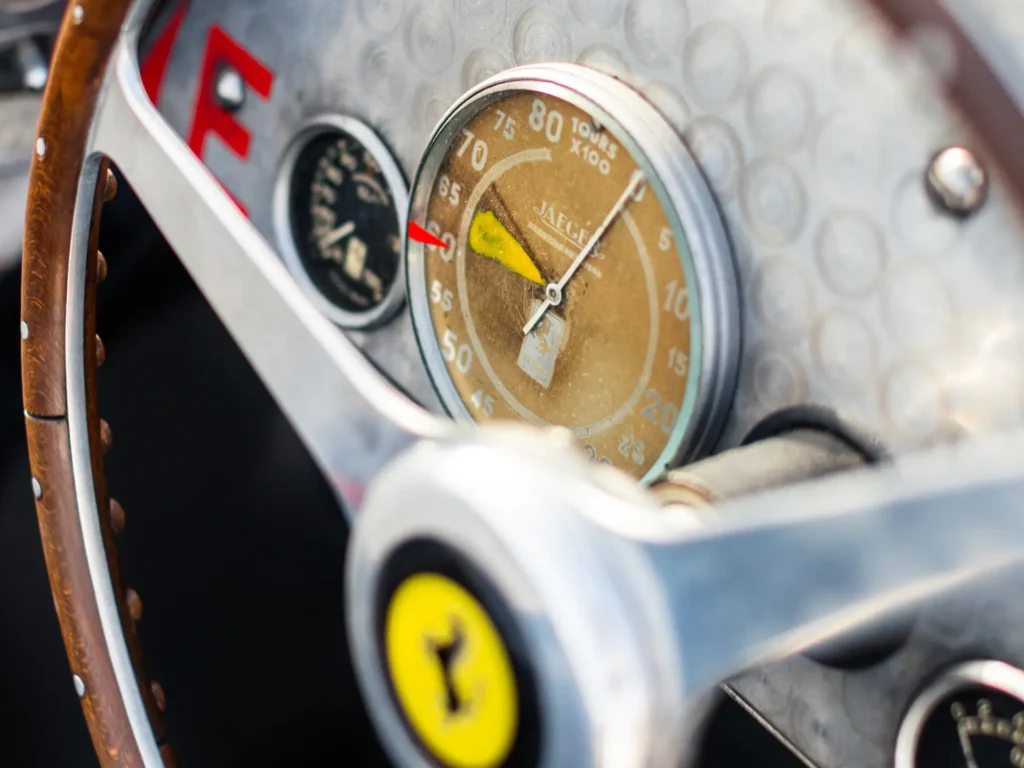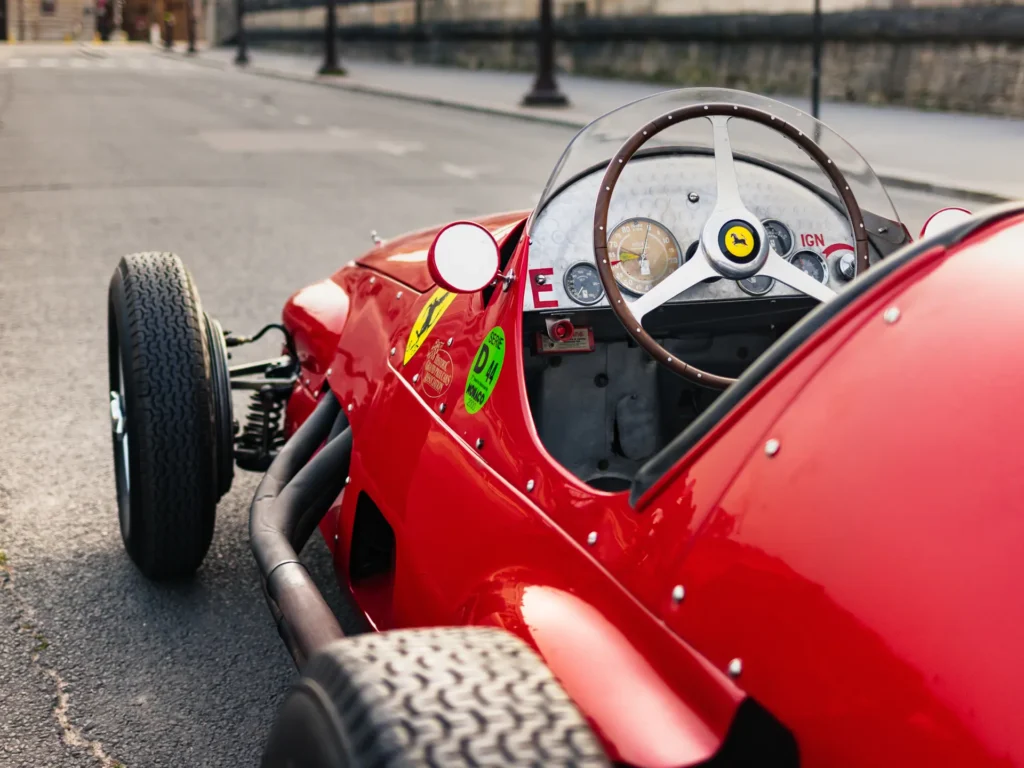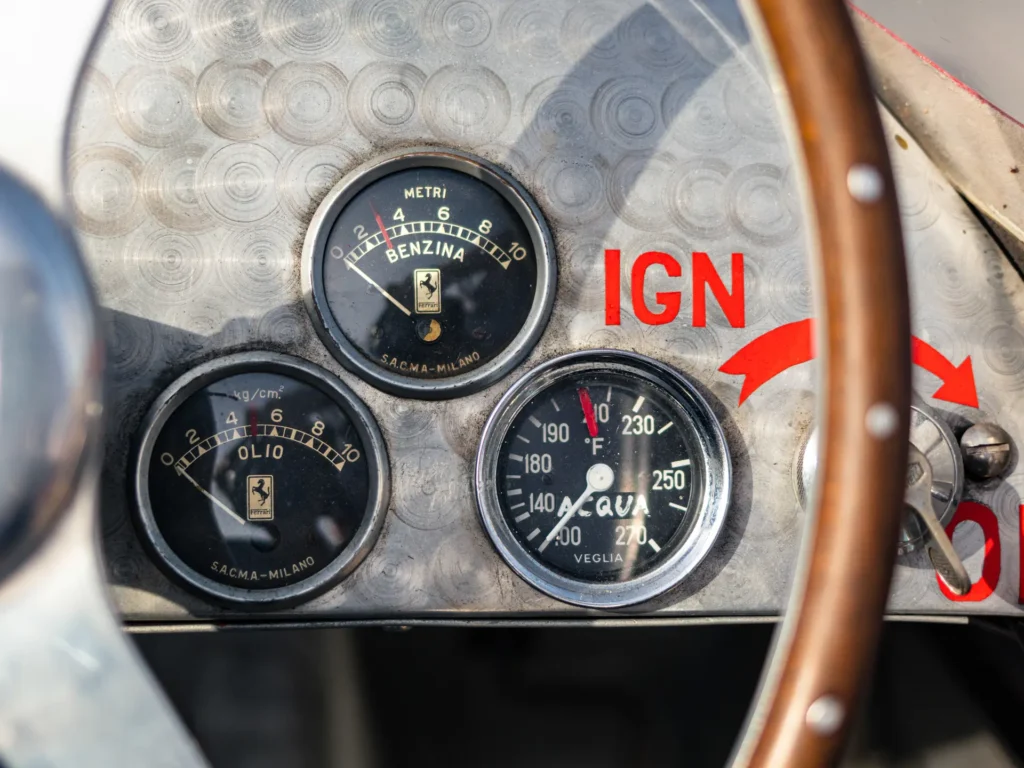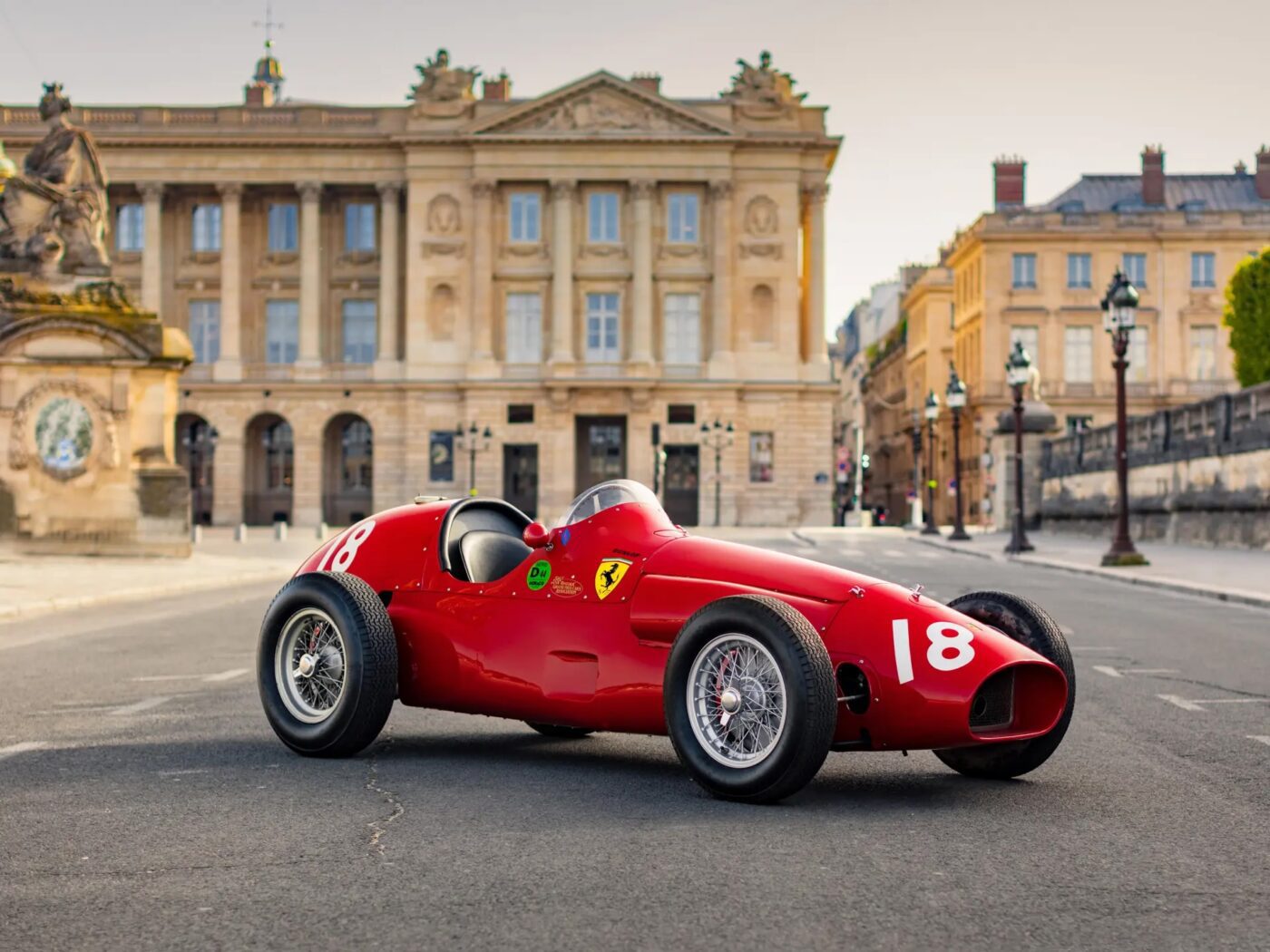1952 and 1953 were pivotal years for Scuderia Ferrari, marked not just by their achievements but also by the shifting landscape of Formula One. With the withdrawal of Alfa Corse and BRM early in the 1952 season, the FIA canceled Formula 1, promoting Formula Two to the premier class for the World Drivers’ Championship for two years.
So if you have somewhere between $2,700,000 – $3,200,000 USD, this could be yours!

Prepared for this shift, Ferrari, under Enzo Ferrari’s leadership, had already developed a new 2-litre inline-four-cylinder engine by late 1951. Engineered by Chief Engineer Aurelio Lampredi, this engine was lighter, more reliable, and powerful, thanks to its 170 horsepower output, a significant increase from its predecessor.

This engine, placed in a simplified chassis, was part of the new 500 F2 that became a favorite in Formula Two, with top speeds over 240 km/h. Ferrari dominated the 1952 and 1953 seasons with the 500 F2, winning 30 out of 33 races, with Alberto Ascari securing back-to-back championships, and teammates Farina and Taruffi also performing strongly.
The success of the 500 F2 led to its evolution into the 625 F1 by 1954, as Formula One regulations shifted. These cars, upgraded to 2.5-litre engines, joined newer models in competition but faced tough competition from drivers like Juan Manuel Fangio.

Chassis 0540, starting life as 0208F, one of the starlet 500 F2 cars, illustrates the model’s storied past. Initially raced by Jacques Swaters’ Ecurie Francorchamps, it saw various successes and later upgrades to 625 F1 specifications. Its journey through numerous owners and races, including appearances at prestigious vintage events, highlights its lasting legacy and the innovative engineering of Ferrari during one of its most successful eras. This car not only underscores Ferrari’s historical impact on Formula One but also continues to be a prized piece for collectors and racing enthusiasts worldwide.
